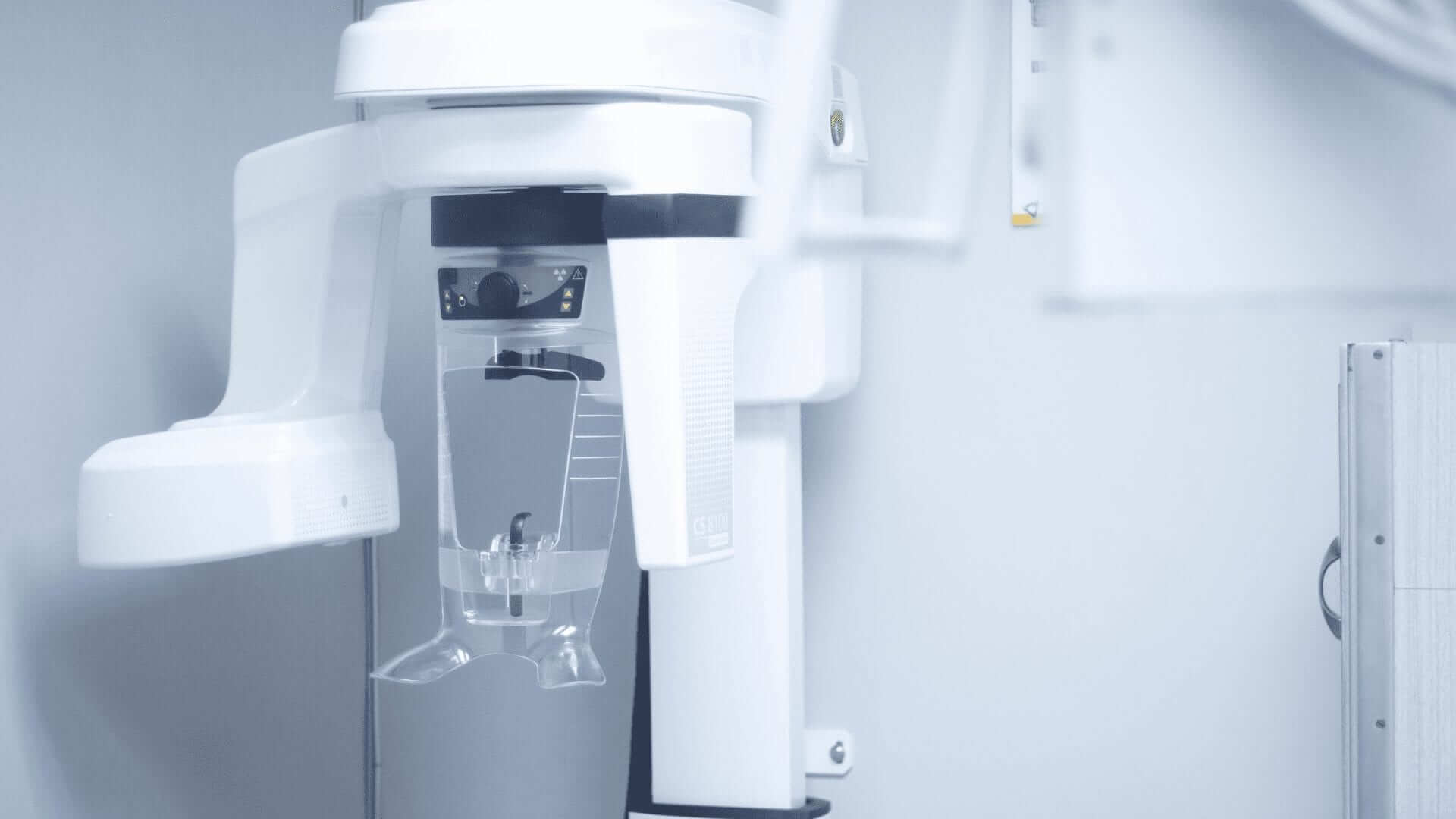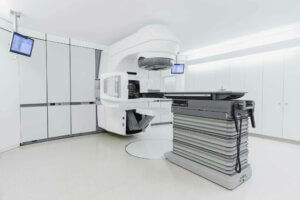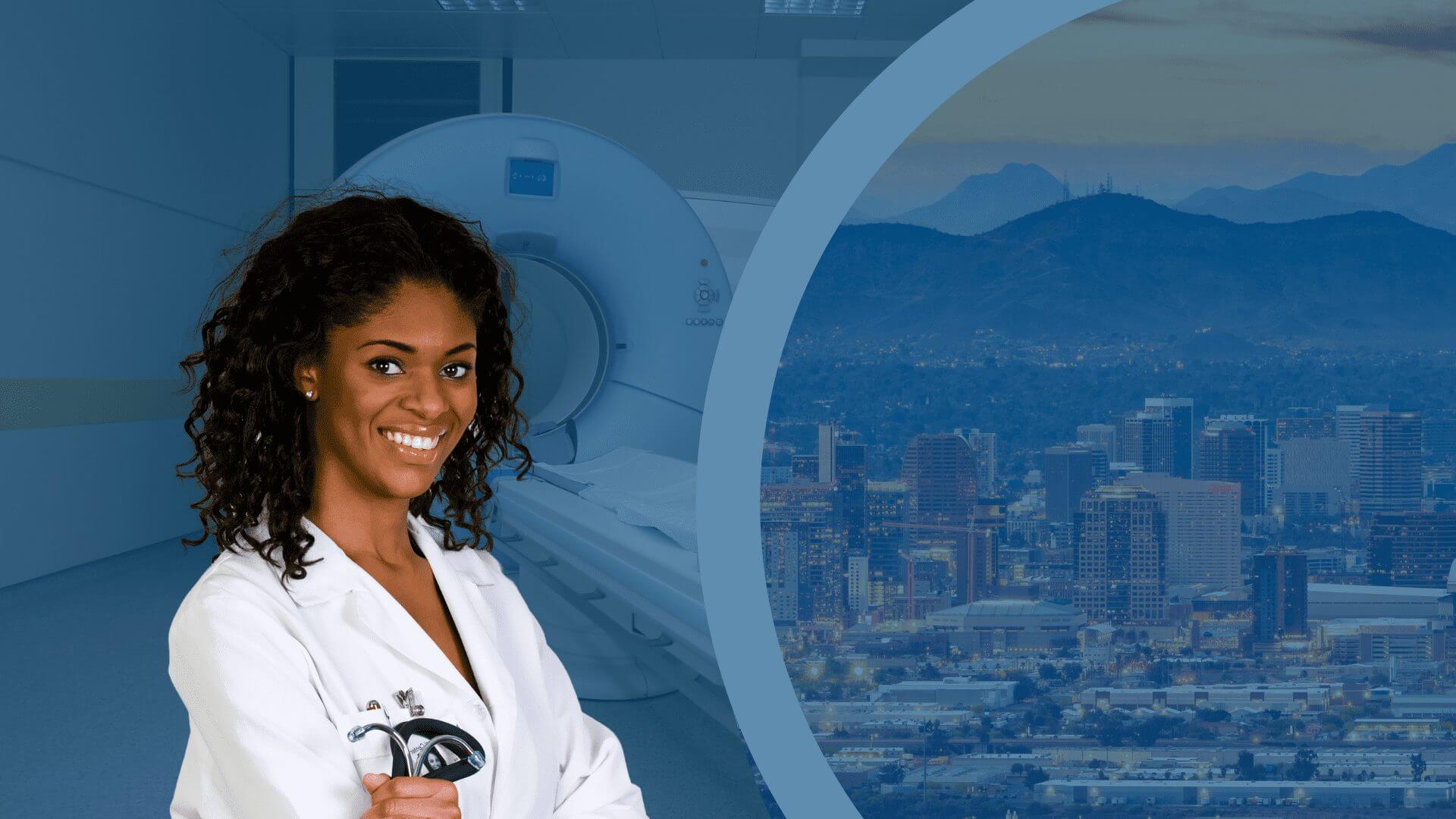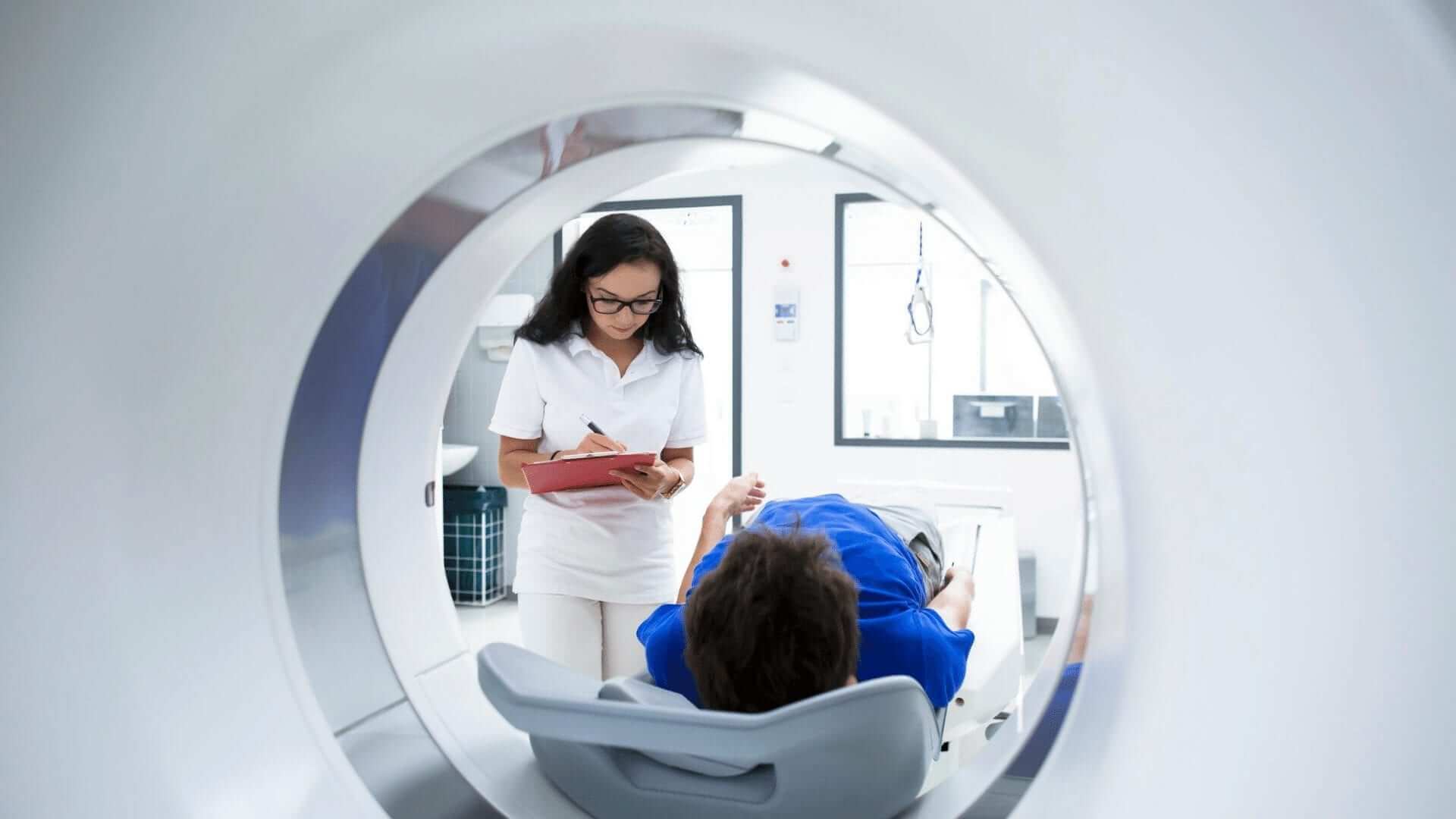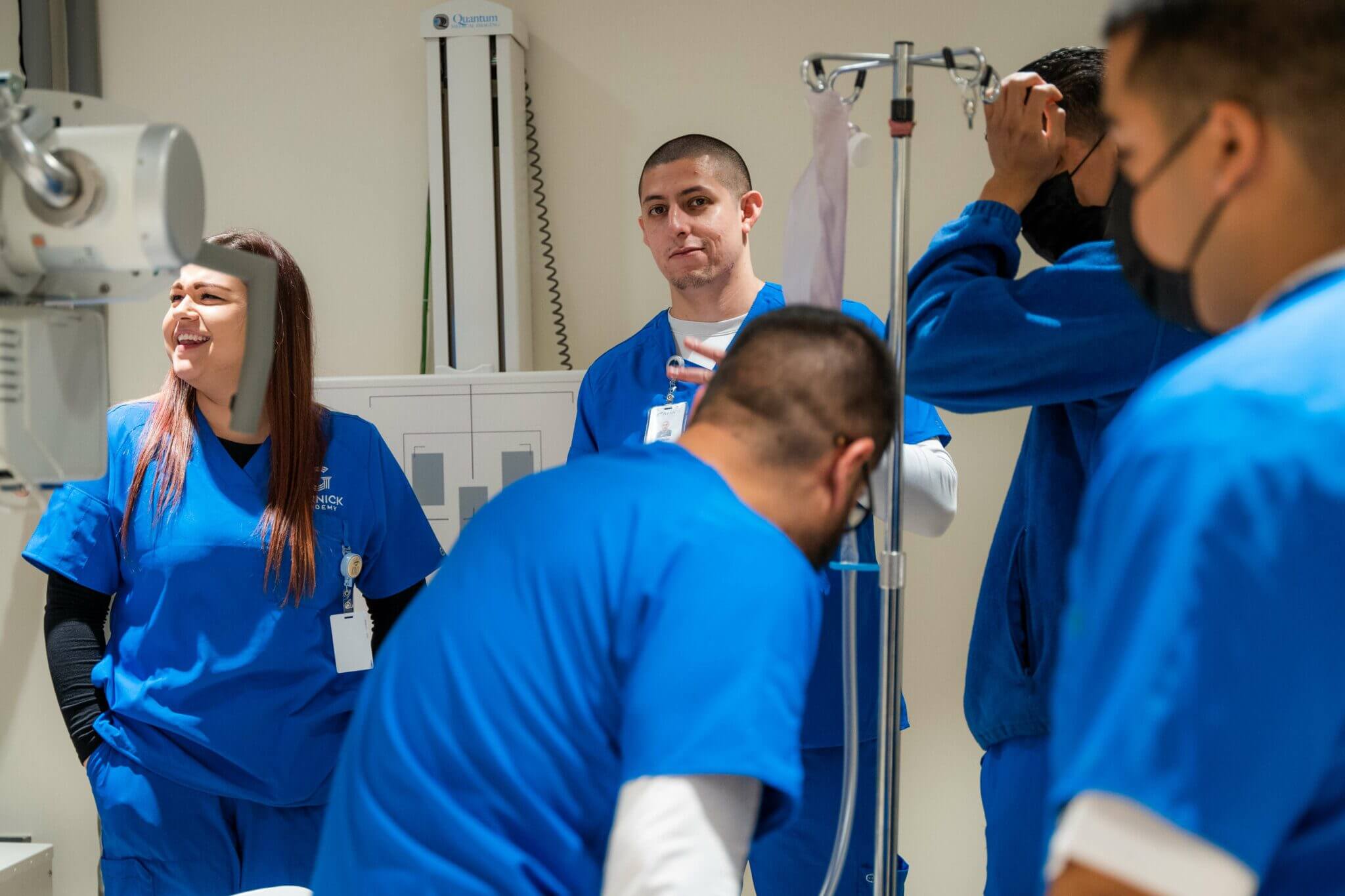Radiologic Technology Programs in California
Date: July 29, 2022
What is Radiology?
Forming a distinct branch of therapeutic allied healthcare, Radiologic Technology relies on ionizing and non-ionizing radiation for the eradication of disease and the promotion of all things wellness. Chiefly, Radiologic Technologists employ radiation, including external beam radiation, internal radiation, and brachytherapy. Overall, Radiologic Imaging deploys multiple technologies, inclusive of:
- X-rays
- Computerized Tomography (CT) Scans
- Magnetic Resonance Imaging (MRI)
- Ultrasound
- PET Scans.1
Interchangeable Names
In daily life, Radiologic Technologists* may often answer to the name RTs, Rad Techs, Radiation Therapists, or Radiographers. Whatever you call them, these persons are trained in the “art and science” of creating high-quality images of the human body. Ultimately, they are responsible for ensuring radiation equipment delivers the exact amounts of radiation to targeted bodily areas.2
Because Radiologic Technologists work closely with radiology doctors (radiologists) and other physicians, they play vital roles within modern healthcare teams. Most often, these professionals work in hospitals, general radiography areas, surgical units, trauma departments, and pediatric care centers. Additionally, they serve in clinics, doctor’s offices, and imaging centers. Because science is expanding (and with it imaging), continued development in the industry remains dependent on highly qualified, well-trained technologists.
How Does One Become an RT?
Those interested in the radiologic sciences should first obtain a solid foundation in biology, anatomy, physics, and chemistry. As a minimal requirement, Radiologic Technologists must have at least an associate degree to seek certification.3 While overall educational levels within the profession include certificates, two- and four-year degrees, and master’s programs. Generally, associate and bachelor-level educational programs include academic and clinical components. In essence, courses emphasize anatomy, pathology, patient care, radiation physics and protection, and image evaluation.3
To Practice
Beyond an imaging education, one must also be certified and registered. Every state requires one to finish an accredited program and then take and pass the National Registry Examination in Radiography. According to the American Society of Radiologic Technologists (ASRT), several certifying pathways exist. Perhaps two of the most common routes include primary and post-primary pathways.
Pathways to Certification
Primary Certification
Primary certificates are generally awarded by scope and region. Accordingly, the National Registry lists the following primary pathway modalities:
- MRI
- Nuclear Medicine
- Radiation Therapy
- Radiography
- Sonography;
- Vascular Sonography.4
Postprimary Certification
Once someone earns primary certification, they may sit for postprimary certification. Typically, professionals obtain postprimary pathway certificates to extend their areas and scopes of practice.4 Postprimary credentialing exists in the following modalities:
- Bone densitometry
- Breast Sonography
- Cardiac Interventional Radiography
- Computed Tomography
- MRI
- Mammography
- Vascular Interventional Radiography
- Vascular Sonography.4
Even after postprimary certification, one needs to maintain certain levels of continuing education credit (CECs). Additionally, some U.S. states require Radiological Technologists to obtain a state license to practice.
The Joint Review Committee on Education in Radiologic Technology (JRCERT) provides programmatic accreditation for radiographic educational programs. Gurnick Academy of Medical Arts’ has obtained accreditation from the JRCERT.
How Much Does a Radiologic Technologist Make?
Radiologic Technology as a profession is listed in Money Talk’s “Best Jobs with Two-Year Degrees.” Simultaneously, it ranks 12 out of the 19 highest-paying jobs one may obtain with a two-year degree.5
Further, Radiologic Technologists made a median salary of $60,510† in 2019. Moreover, the best-paid 25 percent earned $74,660† that year, while the lowest-paid 25 percent made $49,580.†7 However, most professionals cite they frequently vary base salaries by adding to their work additional shifts. These include weekends, holiday hours, overtime, other locations, etc.6
Happy Happy
For job satisfaction, the U.S. News and World Report placed the Radiologic Technologist vocation at a 6.2 out of ten in their overall score. Further, the profession ranks No. 13 in “Best Health Care Support Jobs” and No. 71 in “Overall 100 Best Jobs.”7
Remarkedly, the domain has a mere 1.2 percent unemployment rate, with approximately 14,100 job openings projected in the next decade. (Rankings were determined based on unemployment averages, ten-year growth indexes, future job prospects, stress levels, work-life balances, and other critical employment satisfaction markers.)
Moreover, Radiologic Technologists report job satisfaction by helping serve their medical communities. Most often, they describe meeting various types of people, working alongside professional teams, and using revolutionary equipment while making a difference in patients’ lives. Notably, this is done one image at a time.
In Summary
On the whole, Radiologic Technologists have a lot of options. Pick your pathway using a Gurnick Academy imaging program today. Click here for more information. ~
*Limited scope X-ray Technicians are different from Radiologic Technologists. The terms “technician and technologist” are not interchangeable but are reserved to distinguish within the scopes of practice.
† Your experience may be different. Salaries are calculated based on different variables, including years of experience, degree of education, geographic location, hours worked, and the practice setting.
Citations:
1 Speicher, Alyssa. “Different Imaging Tests Explained|UVA Radiology.” UVA Radiology and Medical Imaging Blog for Patients, UVA Health. Sept. 17, 2019. (Accessed Oct. 7, 2022.)
2 “Detail Occupational Guide.” 2020c. Ca.gov. State of California Employment Development Department. 2020. (Accessed Oct. 17, 2022.)
3^a, b U.S. Bureau of Labor Statistics, U.S. Department of Labor, Occupational Outlook Handbook, Radiologic, and MRI Technologists. (Accessed June 22, 2021.)
4^a, b, c Initial Requirements for Earning ARRT® Credentials.” Www.arrt.org,® The American Registry of Radiologic Technologists® (ARRT).® (Accessed Oct. 6, 2022.)
5 LaPonsie, Maryalene. 2020. “19 High-Paying Jobs You Can Get with a 2-Year Degree.” Money Talks News. March 11, 2020. (Accessed June 23, 2021.)
6 Jones, Ron. 2019. “Radiology Tech Salary per Hour—I Know, I AM One!” The Radiologic Technologist. Ron Jones. April 22, 2019. (Accessed June 23, 2021.)
7^a, b “Radiologic Technologist Overview.” Usnews.com. U.S. News and World Report. 2017. (Accessed June 22, 2021.)
Note:
ARRT,® the American Registry of Radiologic Technologists,® and R.T. (MR) (ARRT)® are registered trademarks owned by the American Registry of Radiologic Technologists.® Gurnick Academy of Medical Arts is not licensed by, endorsed by, or affiliated with the American Registry of Radiologic Technologists.®

